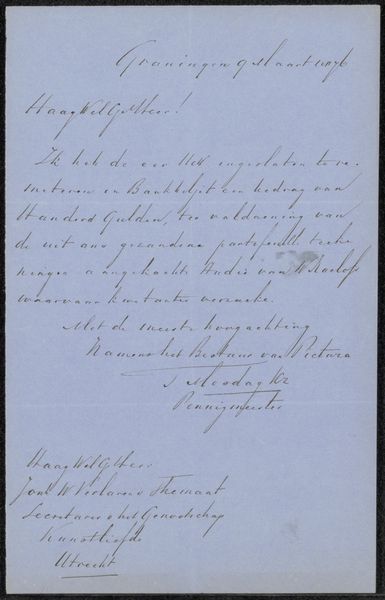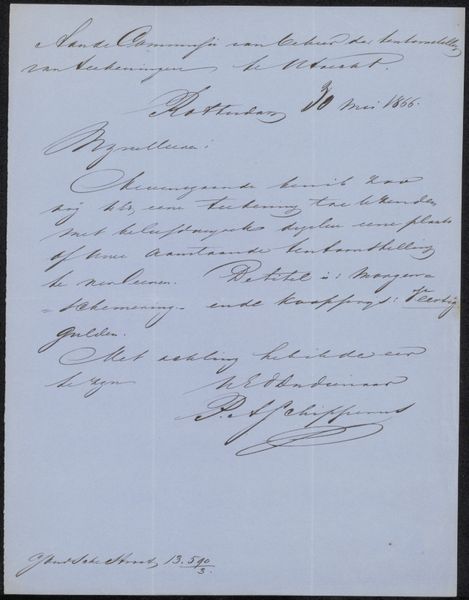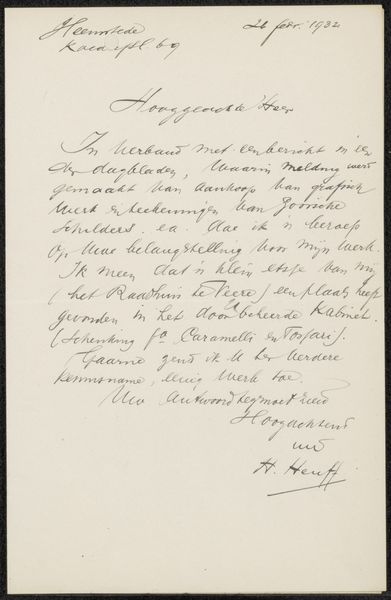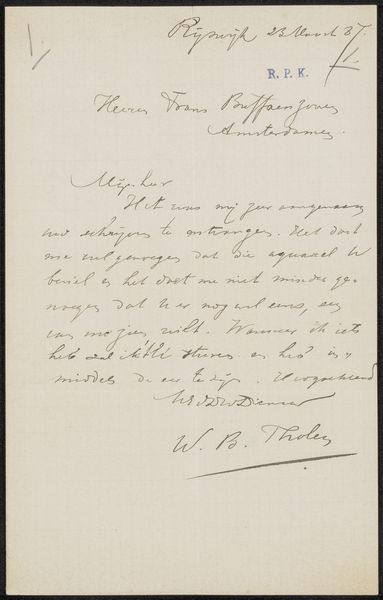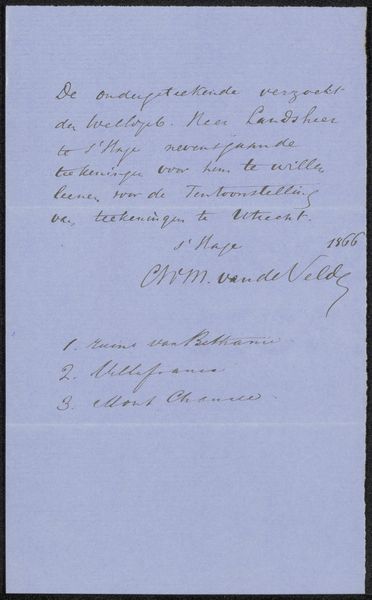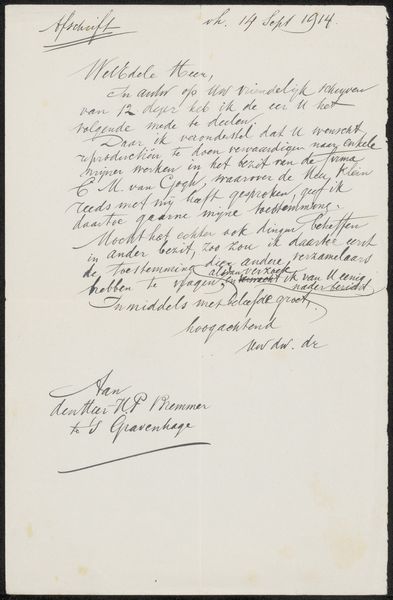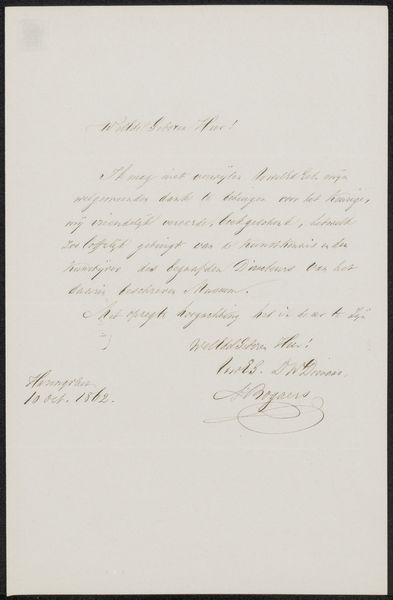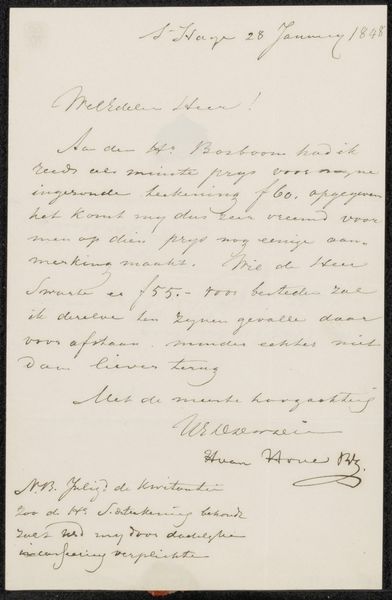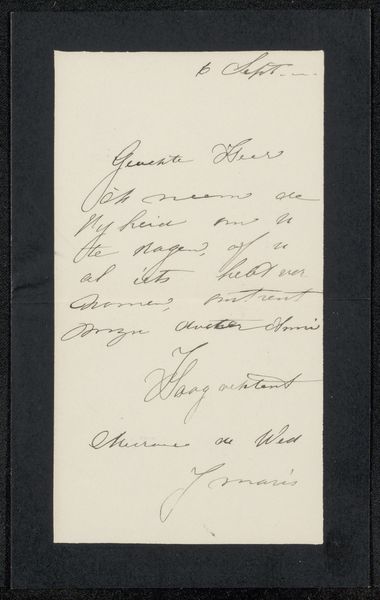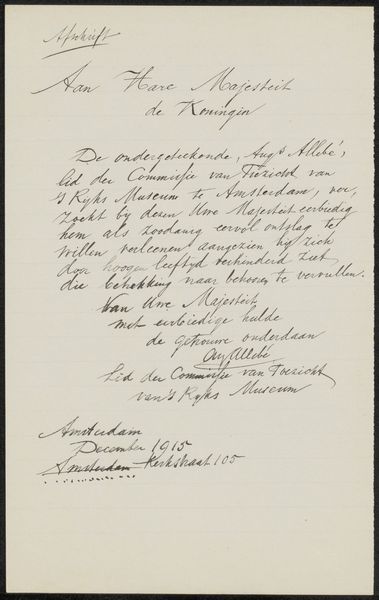
Brief aan de Commissie van de Tentoonstelling van Levende Meesters in Utrecht Possibly 1866
0:00
0:00
drawing, paper, ink, pen
#
drawing
#
paper
#
ink
#
pen
#
academic-art
Copyright: Rijks Museum: Open Domain
Editor: Here we have Augustinus Jacobus Bernardus Wouters' "Brief aan de Commissie van de Tentoonstelling van Levende Meesters in Utrecht," potentially from 1866, made with pen and ink on paper. It's striking to see an actual letter as an artwork. What can you tell me about this piece? Curator: Well, let's consider this drawing as a material object, and its function in the art world of 1866. Wouters isn't simply creating "art" in the traditional sense; he's engaging with the economic structures that support artistic production. We see this through his listing the prices of his works— 'Brugji te Woldhesea $25' and 'Gezigt bosch Amsterdam $20'. This reveals the transactional nature of artistic creation at the time. What do you think about his choice of medium for this business correspondence? Editor: It's interesting that he chose a meticulously penned letter, almost a work of calligraphy, instead of a more utilitarian form of communication. Does the style reflect a blurring of boundaries between administrative and fine art production? Curator: Precisely. The artist is deliberately imbuing a commercial transaction with aesthetic value. Consider the labor involved in producing this letter. The time spent crafting the script, the cost of the ink and paper... these elements speak to a certain level of privilege, but also to the artist's active participation in the market forces that governed their livelihood. How might viewing this as "labor" change how we classify or display it? Editor: I see what you mean. Framing this as a product of labor, not just artistic genius, makes me reconsider how art objects participate in larger economic systems. Curator: Exactly! It's not just about aesthetic appreciation; it's about the social and economic context within which this piece was produced.
Comments
No comments
Be the first to comment and join the conversation on the ultimate creative platform.
